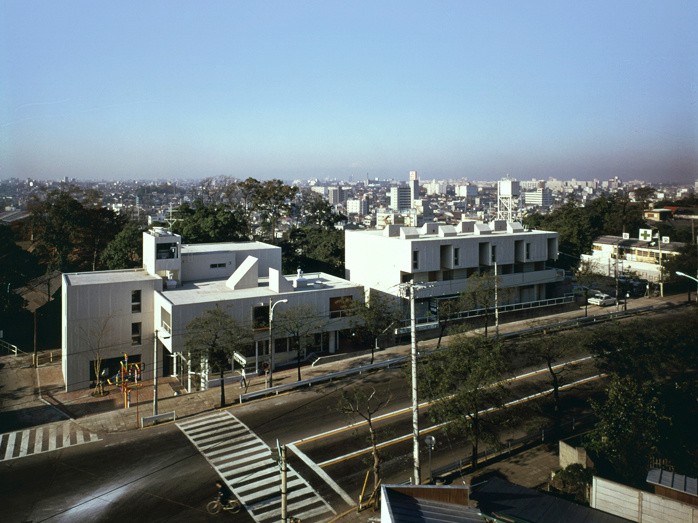Fumihiko Maki, Renowned Japanese Architect, and Pritzker Laureate, Dies at 95
Japanese architect Fumihiko Maki, renowned for his innovative designs that seamlessly blended Eastern and Western architectural principles, passed away at 95. Maki & Associates, his architectural firm, announced his death on June 6. Japanese media attributed his passing to old age, though the firm did not confirm the reports.
Maki, who received the prestigious Pritzker Architecture Prize in 1993, was celebrated for his ability to merge traditional Japanese aesthetics with modernist principles. His contributions to architecture have left an indelible mark on both Japanese and global landscapes.
Maki's influence extended beyond his architectural practice. He has also become known for publicly disparaging the recently suggested concrete design for the 2020 Tokyo Olympics stadium, designed by the British-Iraqi architect Zaha Hadid, for being too large and incongruous, among other things. Due to his articulate dissenting and opposition from hordes of architects, a new design was finally approved by Kengo Kuma that included natural wooden touches in this memorial, fitting the Japanese authenticity.
Education and Early Career
Maki was born in Tokyo in 1928 and went to the University of Tokyo before proceeding to the Cranbrook Academy of Art in Michigan, USA, and later the Harvard University Graduate School of Design. The equivalent experience in practice was also measured during work with other highly rated firms, including Skidmore, Owings & Merrill, Chicago, and Sert, Jackson & Associates, Cambridge, Massachusetts, before the foundation of his firm in 1965.
A pedantic person, Maki went on to teach at the famous Washington University, Harvard University, and the University of Tokyo. His essays, compiled in the 2008 collection "Nurturing Dreams," delve into the Japanese spatial concept of "oku," which he described as the "core of high-density space organized into multiple layers like an onion." This concept allowed for depth even in compact areas, influencing his urban design philosophy.
Recognition and Legacy
Maki was the second Japanese architect to win the Pritzker Prize, although his mentor, Kenzo Tange, won the first prize. Maki's forte was using light, and the Pritzker jury appreciated his dexterity in balancing transparency, translucency, and opacity in his designs. I second Bill Lacy, one of the jury members, who appreciated Maki's attention to detail, as well as his ability to organize structure and create rhythm and scale.
In addition to the Pritzker Prize, Maki has been awarded many other prizes: the Wolf Prize of the State of Israel in 1988, the Arnold Brunner Prize of the American Academy and Institute of Arts and Letters in 1999, and the AIA Gold Medal in 2011.
Notable Projects:
National Museum of Modern Art in Kyoto:
This design is characterized by its floating glass, metal, and concrete forms. The museum's seemingly simple gray exterior belies its intricate interplay of light and texture, highlighting Maki's skill in manipulating space and materials.
Yerba Buena Center for the Arts in San Francisco:
An influential project in the United States, this center is praised for its clarity, elegance, and thoughtful integration into its urban context.
4 World Trade Center in New York:
This project, a significant addition to the New York skyline, showcases Maki's ability to create functional and aesthetically pleasing urban spaces.
Makuhari Messe Exhibition Hall in Chiba, Japan:
Known for its innovative design, this exhibition hall exemplifies Maki's approach to large-scale public architecture.
Hillside Terrace Complex in Tokyo:

A long-term project that highlights Maki's ability to create cohesive and harmonious urban environments.
In the 1980s, Maki designed Tokyo's iconic Spiral building, known for its innovative helical ramp and multifunctional spaces. The building's management mourned his passing, expressing gratitude for the "beautiful slopes and rich space that envisioned an urban park."
According to Japanese media reports, a memorial service is being prepared. Specifically, Maki & Associates intends to release a formal statement later. A visionary architect of the 20th century, Fumihiko Maki has contributed significantly to architectural history owing to his IRS innovative design sensibility, which seamlessly combines the best of the Eastern and Western worlds.
Related Article : Elon Musk's Sale of 5 Properties After 'Will Own No House' Announcement
From Digital Models to 3D-Printed Homes: Jaspreet Kaur Lall Explains How the Innovation Changes the Construction Industry

Future Belongs to Green Construction: Sampath Kumar Paspunoori Explains One of the Key Trends in the Construction Industry

Kamala Harris' Campaign Ad Uses Iconic Visuals from Carrie Mae Weems to Connect with Voters

Historic Ancient Roman Ruins in Baalbek Remain Strong After Israeli Air Strikes; Locals Seek Cultural Protection

4 Ways to Honor Departed Loved Ones in Your Home Design














